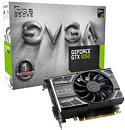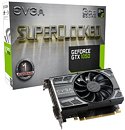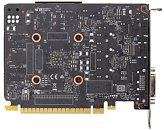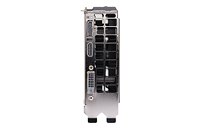Raevenlord
News Editor
- Joined
- Aug 12, 2016
- Messages
- 3,755 (1.16/day)
- Location
- Portugal
| System Name | The Ryzening |
|---|---|
| Processor | AMD Ryzen 9 5900X |
| Motherboard | MSI X570 MAG TOMAHAWK |
| Cooling | Lian Li Galahad 360mm AIO |
| Memory | 32 GB G.Skill Trident Z F4-3733 (4x 8 GB) |
| Video Card(s) | Gigabyte RTX 3070 Ti |
| Storage | Boot: Transcend MTE220S 2TB, Kintson A2000 1TB, Seagate Firewolf Pro 14 TB |
| Display(s) | Acer Nitro VG270UP (1440p 144 Hz IPS) |
| Case | Lian Li O11DX Dynamic White |
| Audio Device(s) | iFi Audio Zen DAC |
| Power Supply | Seasonic Focus+ 750 W |
| Mouse | Cooler Master Masterkeys Lite L |
| Keyboard | Cooler Master Masterkeys Lite L |
| Software | Windows 10 x64 |
EVGA announced the market availability of a "vanilla" GTX 1050 3 GB graphics card (the Gaming 03G) and its SuperClocked variant (the SC Gaming 03G). They both carry the same 768 CUDA cores. Clocks for the Gaming 03G are NVIDIA reference (1392 MHz base, up to 1518 MHz boost, 3 GB of 7008 MHz GDDR5 memory across a 96-bit memory bus), and the SuperClocked version brings the core clocks up to 1455MHz and 1569MHz (base and boost, respectively).
The graphics cards come in a short form factor (144.78mm x 111.15mm) - a simple, single-fan cooling solution is more than enough to cool down the GPU, which only needs PCIe power to function correctly. Display outputs are set at 1x dual-link DVI-D, 1x DisplayPort 1.4, and 1x HDMI 2.0. The Gaming 03G version is available for $159.99, while the SuperClocked version comes in at $169.99. Both feature a three-year warranty.





View at TechPowerUp Main Site
The graphics cards come in a short form factor (144.78mm x 111.15mm) - a simple, single-fan cooling solution is more than enough to cool down the GPU, which only needs PCIe power to function correctly. Display outputs are set at 1x dual-link DVI-D, 1x DisplayPort 1.4, and 1x HDMI 2.0. The Gaming 03G version is available for $159.99, while the SuperClocked version comes in at $169.99. Both feature a three-year warranty.





View at TechPowerUp Main Site






